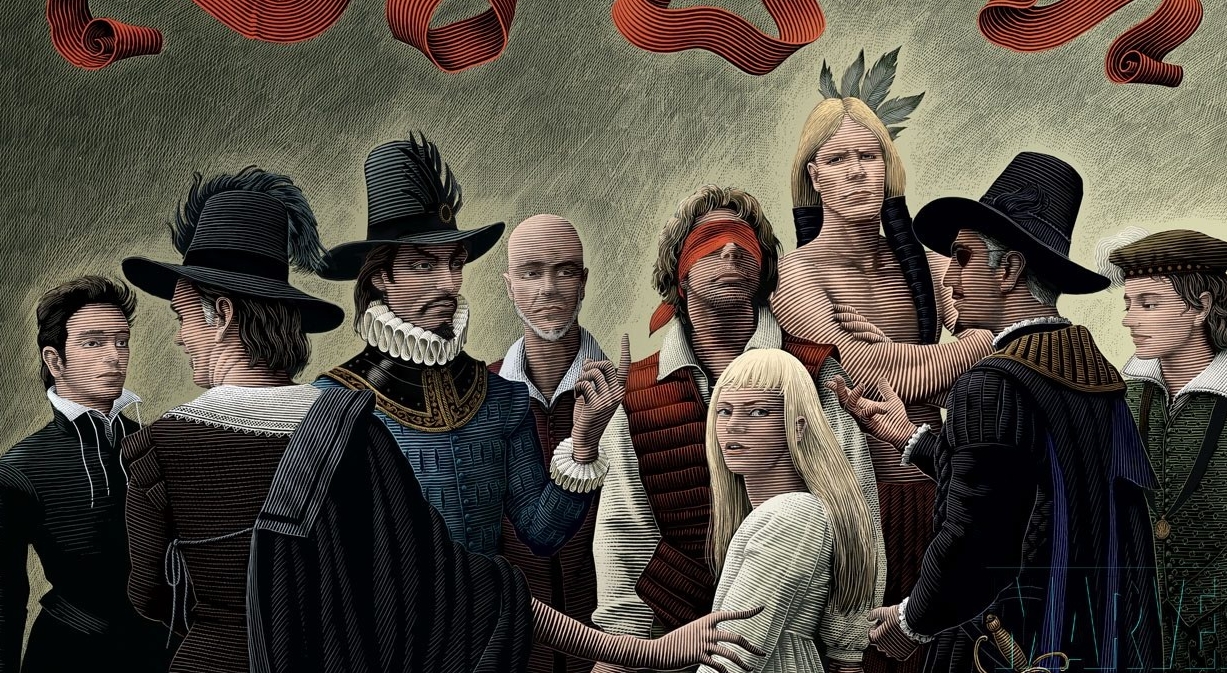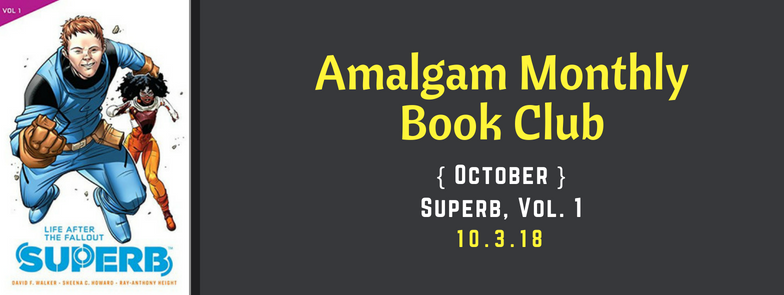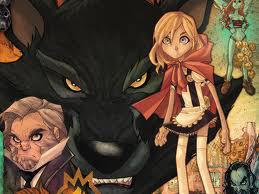Political intrigue. Secrecy. Discrimination. Government plots. Mysterious science.
No, it’s not present-day. It’s the Elizabethan Age – the year 1602, to be exact.
A little background on this title: In 2000, Joe Quesada, then a comic book editor for Marvel Comics’ Marvel Knights imprint, became editor-in-chief of Marvel. He approached writer Neil Gaiman in August of 2001 and asked him to write a story for Marvel. Eventually Gaiman agreed, though he had no idea what the book would be about.
After September 11, Gaiman decided he didn’t want to write anything that involved modern-day weaponry. He took a trip to Venice and was inspired by how the past still seemed to seep through every corner of the city. Thus, he decided he wanted to tell a story not about our present-day fears and anxieties, but about the past. The result is the eight-issue limited series Marvel 1602.
There’s no flashback, no time travel scene, no explanation for why our beloved Marvel characters have ended up in Elizabethan times. They’re simply there, and so 1602 is most definitely a period piece, but one that still had its threads connecting it to present day through the placement of the characters. After all, half the fun of reading this title is picking out who’s who in each scene: sometimes the names are slightly altered to make them more period-appropriate, like orphan Peter Parquagh or headmaster Carlos Javier. (There’s one reveal in particular that I never caught onto, and the reveal towards the end of the comic had me grinning from ear to ear with how perfect the period-characterization was.)
Everything is cleverly woven into real, historical events of the past. For example, the mutants of the X-men are referred to as “witchbreed” (considering history’s zealous obsession with witches and heresy) and constantly plagued by the Inquisition. It’s here Gaiman’s creativity shines: the ways in which he manages to merge superhero mythos with the past don’t feel like a gimmick. And while you won’t see people like Daredevil donning their famed costumes to fight crime in the streets of, say, Venice anytime soon, what you will get is a storyline that allows Gaiman to get up close and personal with these characters in an unfamiliar setting.
There aren’t a lot of action scenes in 1602, which can be a turn-off for any reader looking for some with a lot of panel-reading and page-turning excitement, but the action that is present is quick and masterfully depicted, thanks in large part to artist Andy Kubert and painter Richard Isanove. Which brings me to another point: each page is gorgeously colored, with color palettes that not only fit the mood but are beautiful to look at regardless of whether or not they’re part of a comic. I could randomly flip to any page and just admire the coloring, as well as the art itself; there’s some pretty powerful imagery that makes its way into this title.
The story is an interesting one to follow. As a reader, you’re not sure why these characters have turned up 400 years before their time, but you quickly learn to overlook this as you’re sucked into the multiple storylines threading through the pages. Nick Fury and Stephen Strange are involved in a mystery regarding the Knights Templar; the real James VI of Scotland becomes entangled with a man named Enrique (three guesses who that is) and enlists his help to blame the “witchbreed” for the death of Queen Elizabeth; siblings Petros and Wanda are facing a burning at the stake for their exposure as “witchbreed” themselves.
Sooner or later these arcs, plus others, begin to intermingle and affect each other as Gaiman brings us closer to the real meat of the story. I’d say more but I don’t want to spoil the experience for you because really, it’s a lot of fun navigating the twists and turns that this story takes until it leads up to the ending and the big conclusion.
To be fair, there’s a lot going on, so if you’re not careful you might end up losing track of where certain characters have ended up or what their motives are. That’s not to say it’s bad writing, but just that Gaiman had so much to juggle around that lingering too long on certain characters would deprive others of their equal share of the spotlight, so he has to jump around to make sure everything ties together.
Overall, Marvel 1602 is a fun and enjoyable read. It’s all the intrigue of the past with the familiar faces and escapades of the comic book world, and definitely recommended for anyone who’s a Neil Gaiman fan, or who loves history, or who loves comics in general. I think that covers a lot of bases, and rightly so. It’s just that kind of story.
4 out of 5 stars
Gabby Taub, the Fantasy Reviewer at Girls in Capes, is a senior at New York University studying creative writing. She enjoys reading, writing, watching TV, and spending time getting lost among the bookshelves at Strand Bookstore.
Gabby also has great recommendations for Captain America comics that everyone should read. You can also check out her highlights of women in the comics industry whose work you should be reading.






At first it feels like a gimmick but it sounds like Gaiman found a way to make it integral to the story. Great review Gabby!
– Maurice
thegeektwins.com